Canadian Dollar Re-couples with Oil Price as Outlook Brightens
- Written by: James Skinner
-CAD recouples with oil prices and outlook is bullish for both.
-But the Bank of Canada takes centre stage this week.
-BoC seen holding cash rate; economic projections in focus.
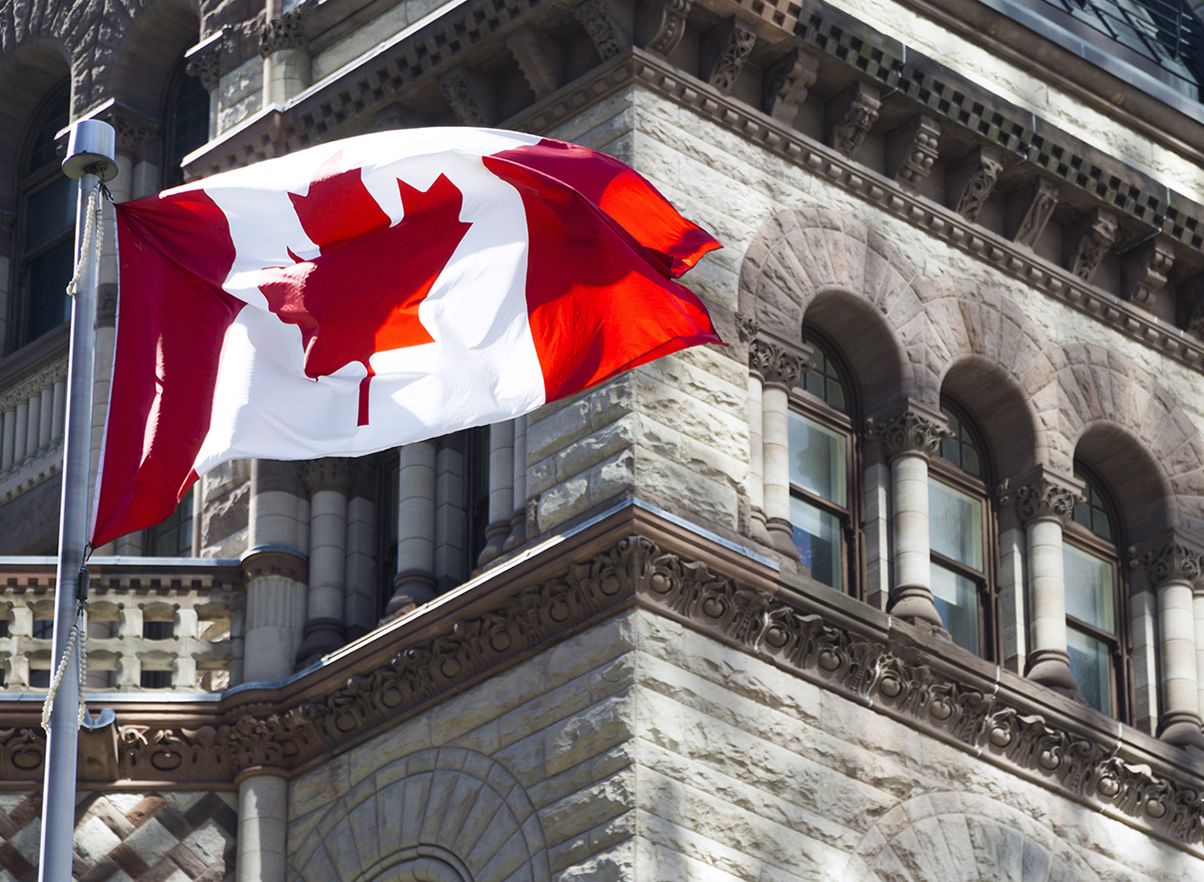
© COSPV, Adobe Stock
The Canadian Dollar saw a mixed performance at the start of the new week as markets shrugged off geopolitical events from the weekend, which saw oil prices fall Monday, while traders positioned for an action packed week in terms of economic data.
Monday's chequered price action comes closely on the heels of large gains for the Canadian currency and just as the Loonie shows signs of reestablishing its close correlation with the price of oil, which has risen sharply this year due to tight supply management, robust global growth and geopolitics.
Although an intraday decline in oil prices may have held back the Loonie on Monday, the renewed relationshop bodes well for the Canadian currency particularly as some strategists are looking for a further increase in prices over the coming weeks and months.
"Elevated commodity prices are providing CAD support, dominating as a nearterm driver and delivering an important offset to bearish, extended interest rate differentials," says Shaun Osborne, chief FX strategist at Scotiabank, before noting a busy Canadian economic calendar this week.
Prices of WTI crude oil futures are up by 9.78%, to $66.3, already for the 2018 year to date but some say they could rise even further still. A favourable outlook for global growth and continued supply management among Organization for Petroleum Exporting Countries members have supported the rise to some extent, although the prospect of a conflict around Syria in the Middle East and a renewal of onerous sanctions against Iran have done much of the heavy lifting.
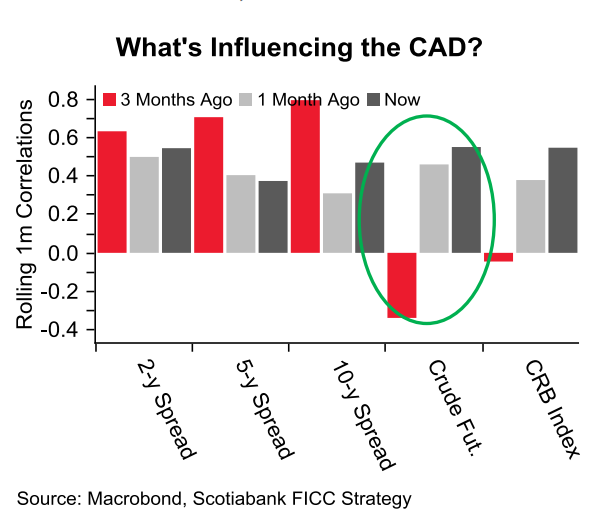
Above: Scotiabank graph showing drivers of Canadian Dollar price action.
"We anticipate a constructive tone from the Bank of Canada, acknowledging improvement on the NAFTA front and last week’s Business Outlook Survey results," Osborne adds. "We remain bullish CAD looking to medium-term strength through the spring/summer period."
The Bank of Canada will announce its latest interest rate decision and economic forecasts Wednesday, which is the main event for the Canadian Dollar this week, while inflation and retail sales data will be released toward the end of the week.
"Of late, WTI and Brent have taken out key resistance levels and realized oil volatility is rising. As a result, the CAD/Crude correlation is firming," says Bipan Rai, a macro strategist at CIBC Capital Markets. "A cursory glance at the technical charts implies a breakout target of $74 for WTI which should support a USD/CAD move towards our target of 1.2485 and potentially an extension towards the 1.2400 area."
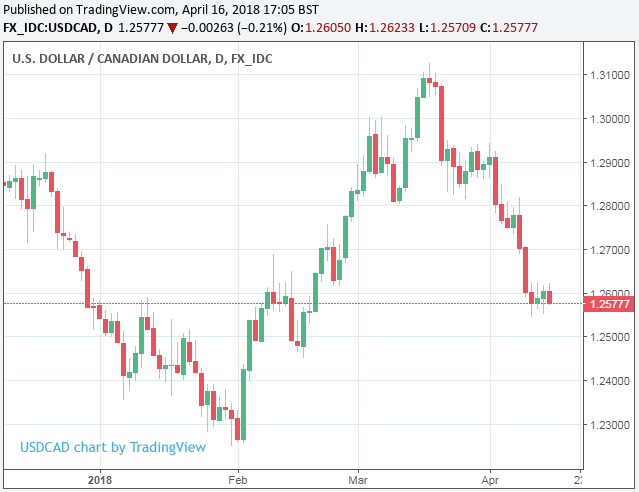
Above: USD/CAD rate shown at daily intervals.
The USD/CAD rate fell to a low of 1.2541 during early April and traded at 1.2581 Monday, down 0.19% for the session, while the Pound-to-Canadian-Dollar rate has been as low as 1.78 and traded at 1.8020 Monday.
USD/CAD is broadly unchanged for the year to date after having whipsawed between a 5% gain and 5% loss during recent months. The Pound is 6.4% higher for 2018 thus far but had previously notched up a near-10% gain over the Canadian currency.
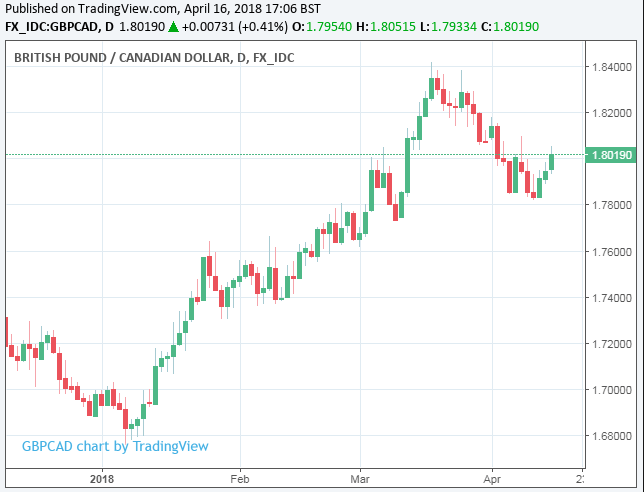
Above: Pound-to-Canadian-Dollar rate shown at daily intervals.
WTI crude oil futures fell 1.65% during the Monday session as markets shrugged off previously-elevated fears over Saturday's US-led bombing raid on Syria, which came in response to alleged chemical weapons use by the Syrian government. Brent crude oil prices were also nursing a noteworthy loss, trading 1.35% lower at $71.60. Both benchmarks rose notably last week, trading higher by 4.45% and 6.69% respectively.
Rai and the CIBC strategy team say it is worth keeping an eye on the correlation between the price of oil and the Canadian Dollar during the months ahead but also warn this renewed relationship may well turn out to be because of a "proxy effect" or a "common principle" such as fears over NAFTA or global trade more generally.
This is a pertinent point in light of the increasingly aggressive "protectionist" stance of President Donald Trump, which has seen the White House slap tariffs on American imports of steel, aluminium and a wide array of Chinese produced goods. Those actions, along with China's equal but opposing retaliation, have led to palpable fears of the possible "trade war" among markets.
"For the CAD, the key this week is how the market reacts to the confluence of the BoC, CPI/retail sales and NAFTA developments. Outside of that, it’s the ongoing reduction of trade [risk] premium, the correction of the weak trade-weighted valuation and a moderation of the bearish market view on domestic fundamentals that will continue to resonate," says Rai, in a note Monday.
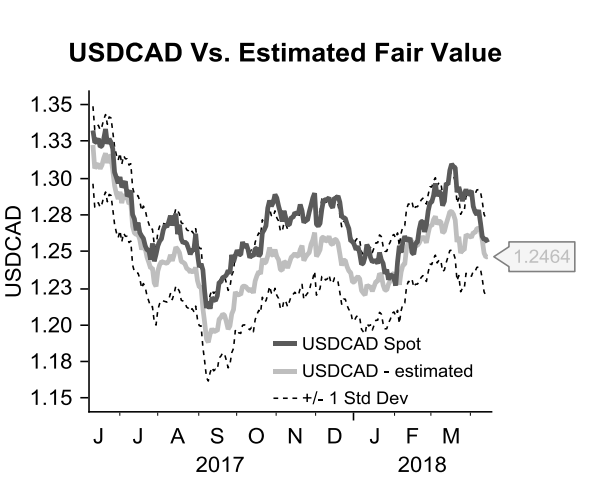
Above: Scotiabank graph showing USD/CAD "fair value" and market price.
While oil prices have clearly taking a more predominant role in steering the Canadian Dollar of late, the Bank of Canada will be front and centre for the Loonie this week. Markets are looking to see the BoC hold its interest rate steady at 1.25% so, assuming a surprise rate hike is not forthcoming, the bank's new economic projections will garner the most attention.
From these, traders will be hoping to gain insight into when the next rate rise may come. They will also look to assess the likely pace, or pathway, of all future hikes over the coming year. The market judgement after having viewed the projections will be certain to have an impact on the Canadian Dollar.
The Bank of Canada last raised rates in January, by 25 basis points to 1.25%, and at the time markets were happy betting the central bank would manage a total of three interest rate rises in 2018 as a whole while interest rate derivatives markets assigned a 75% probability to another rate hike in April.
Since then, those same markets have become less convinced and are now fully pricing just one more rate rise for 2018, while the implied probability of an April move has fallen to just 20%. A minor deceleration of economic data and previously-elevated concerns about the future of NAFTA were at the heart of this.
Wednesday will present Canadian rate setters an opportunity to either reinforce expectations of a slower pace of interest rate rises, or to dispense with such fears altogether.
"We remain buyers of dips in USDCAD ahead of the BoC. We think much of the good news is priced into the pair and prefer long CAD exposure on crosses and hold our short NZDCAD for another week," says Mark McCormick, head of North American FX strategy at TD Securities.
Advertisement
Get up to 5% more foreign exchange by using a specialist provider to get closer to the real market rate and avoid the gaping spreads charged by your bank when providing currency. Learn more here.




